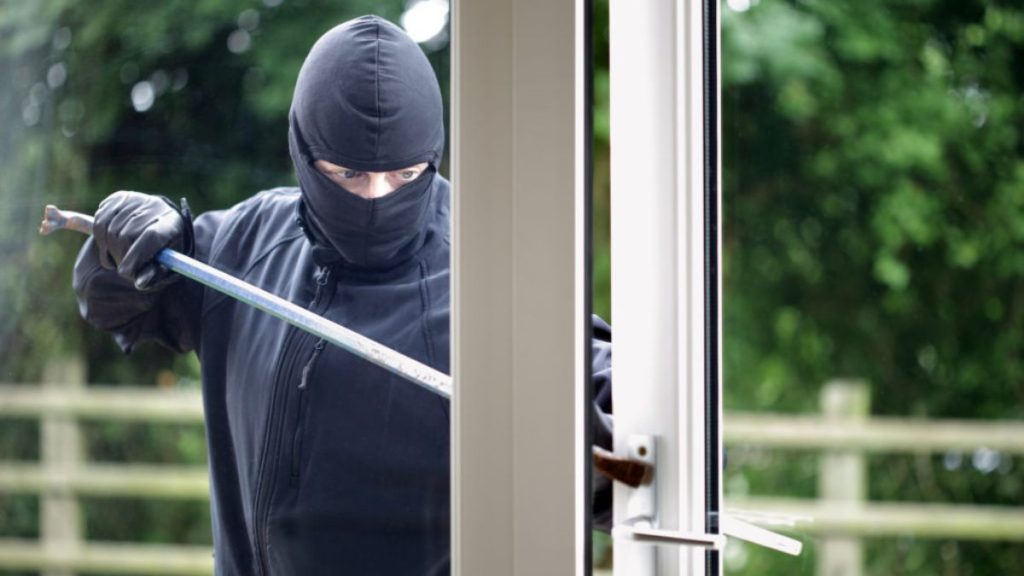North Carolina Homeowners Defend Against Axe-Wielding Intruder: A Wake-Up Call for Home Security
Imagine waking up to the sound of someone trying to break into your home—with an axe in his hand.
That’s exactly what happened to a couple in Duplin County, North Carolina, just before 6:30 a.m. According to local report, a man armed with an axe tried forcing his way into a home.
The homeowners didn’t wait to become victims. They opened fire.
By the time police arrived, the intruder was already dead. The axe, a BB gun, and a knife were found on him. That’s not just terrifying—it’s a reminder of how real and raw home invasion threats can be, even in quieter parts of the country.
Now, I know what you might be thinking: how does something like this even happen?
This wasn’t some movie plot or exaggerated viral story. It’s real. And it forces us to think—how prepared are we if something like this were to happen at our door?
Detailed Timeline of Events
This wasn’t a vague “sometime during the night” kind of story. The timeline matters—and it says a lot about how quickly things escalated.
- Around 6:25 a.m., the homeowners heard banging near the back of their house.
- When they checked, they saw a man with an axe attempting to force his way in.
- Fearing for their safety, they opened fire, striking the intruder multiple times.
- Sheriff’s deputies arrived shortly after. The intruder was already dead.
- Officers recovered not just an axe—but also a BB gun and a knife from the man’s body.
All of this happened in a matter of minutes.
It’s the kind of situation where hesitation could’ve turned deadly for the homeowners. The sheriff later confirmed that the individual was actively trying to break in—not just loitering or wandering. This was an aggressive, dangerous attempt.
Legal Standpoint: North Carolina’s Self-Defense Laws

Now let’s talk about what everyone’s wondering: Was the shooting legal?
Yes—and here’s why.
North Carolina follows what’s called the “Castle Doctrine.” In plain terms, this law gives you the right to use deadly force inside your home if someone tries to enter unlawfully and poses a threat.
You’re not expected to run. You don’t have to hide. If someone breaks in and your life or safety feels at risk, you can defend yourself—and that includes using a gun.
In this case, the intruder was armed—not just with one weapon, but three. That detail makes it very unlikely any prosecutor would challenge the homeowners’ right to shoot.
Community Response and Reactions
When something this intense happens in a small county like Duplin, it doesn’t stay quiet. People talk—online, in neighborhoods, at gas stations. And the reactions have been loud, emotional, and divided.
Many community members expressed support for the homeowners’ actions, emphasizing the right to self-defense when faced with a threatening intruder on Facebook.
But others questioned how the intruder got that far in the first place. Some even raised concerns about mental health or drug abuse, wondering if this was a desperate act rather than a targeted one.
The sheriff’s office hasn’t released full background info yet, but one thing is clear: the community is shaken. Even those who support the shooting say they’ll now be locking their doors earlier and rethinking their own safety plans.
Preventive Measures and Home Security Tips

Let’s be honest—most of us don’t think about home security until something bad happens. But if this case teaches us anything, it’s this: you can’t afford to be unprepared.
Here are some practical tips experts and law enforcement recommend:
- Reinforce entry points. Use heavy-duty deadbolts, window locks, and solid doors—especially at the back or side of the house.
- Motion sensor lights and cameras. Most break-ins happen in early morning or late night. Make sure dark corners are lit up.
- Alarm systems. Even a basic one that sounds when a door opens can scare off intruders.
- Keep a safety plan. If you own a firearm, keep it secured but accessible. And make sure every adult in the house knows what to do in an emergency.
In fact, Sheriff’s departments across North Carolina offer free home safety evaluations. You can request one and get personalized recommendations. Just contact your local office.
Broader Context: Trends in Home Invasions and Self-Defense Cases
This incident might feel like a one-off, but it’s part of a much bigger pattern playing out across America—especially in southern states like North Carolina, where gun ownership and self-defense laws are widely supported.
According to FBI crime data, there are over 1 million home invasions in the U.S. every year. That’s roughly one every 30 seconds. And in many of these cases, homeowners end up having to defend themselves—sometimes with deadly force.
In North Carolina alone, self-defense shootings during home break-ins have risen by nearly 20% in the past five years. Experts point to a mix of factors:
- Economic stress and substance abuse driving more break-ins
- Easier access to firearms for both homeowners and intruders
- The legal strength of the Castle Doctrine, which encourages armed defense
You might remember the 2023 case from Goldsboro, NC—where a 12-year-old boy shot and killed an armed intruder who had broken into his family’s home. That story shocked people nationwide, but it followed the same legal logic as this one: if you break in with a weapon, the homeowner has the right to shoot.
Expert Opinions and Analysis
Incidents like the Duplin County shooting always spark a deeper conversation—one that goes beyond headlines and enters the world of law, psychology, and public safety.
Legal experts familiar with North Carolina’s Castle Doctrine agree on one thing: the law clearly backs homeowners who use deadly force to protect themselves if they reasonably believe they’re facing serious harm or death.
The law presumes that if someone unlawfully enters your home, you have a legal right to defend yourself—without needing to retreat.
Attorneys across the state point out that this legal clarity often prevents homeowners from being charged in such cases. But they also warn: every situation is judged on the specific facts, and excessive or reckless use of force can still land someone in court.
On the behavioral side, many criminologists stress that self-defense shootings are split-second decisions—usually driven more by fear and instinct than training. That’s why gun safety advocates continue pushing for responsible firearm education, even in pro-gun states.
You’ll also find debate on whether these laws are too broad or not. Some argue that Castle Laws can be misused. Others say they’re essential in a time where break-ins can escalate violently, like in this very case.
Conclusion
This wasn’t just another news story—it was a hard jolt of reality.
An armed man tried to force his way into someone’s home. The homeowners had seconds to decide. They chose to defend themselves. The law backed them. And someone died.
It’s easy to scroll past headlines like this, but if you really sit with it, it forces you to think:
What would you do in their place? Would you have a plan? Would you freeze? Would your family be safe?
These aren’t questions just for gun owners or rural communities. They’re for anyone who’s ever locked their front door at night and hoped it would be enough.
Yes, the law matters. Yes, knowing your rights is important. But at the heart of it all is something more basic: the instinct to protect the people you love.
And if we learn anything from this story, it’s this—don’t wait for a close call to start preparing.
Disclaimer: This article is for informational purposes only and does not constitute legal advice. Self-defense laws vary by state—consult a legal expert for guidance. All facts are based on publicly available sources at the time of writing.


